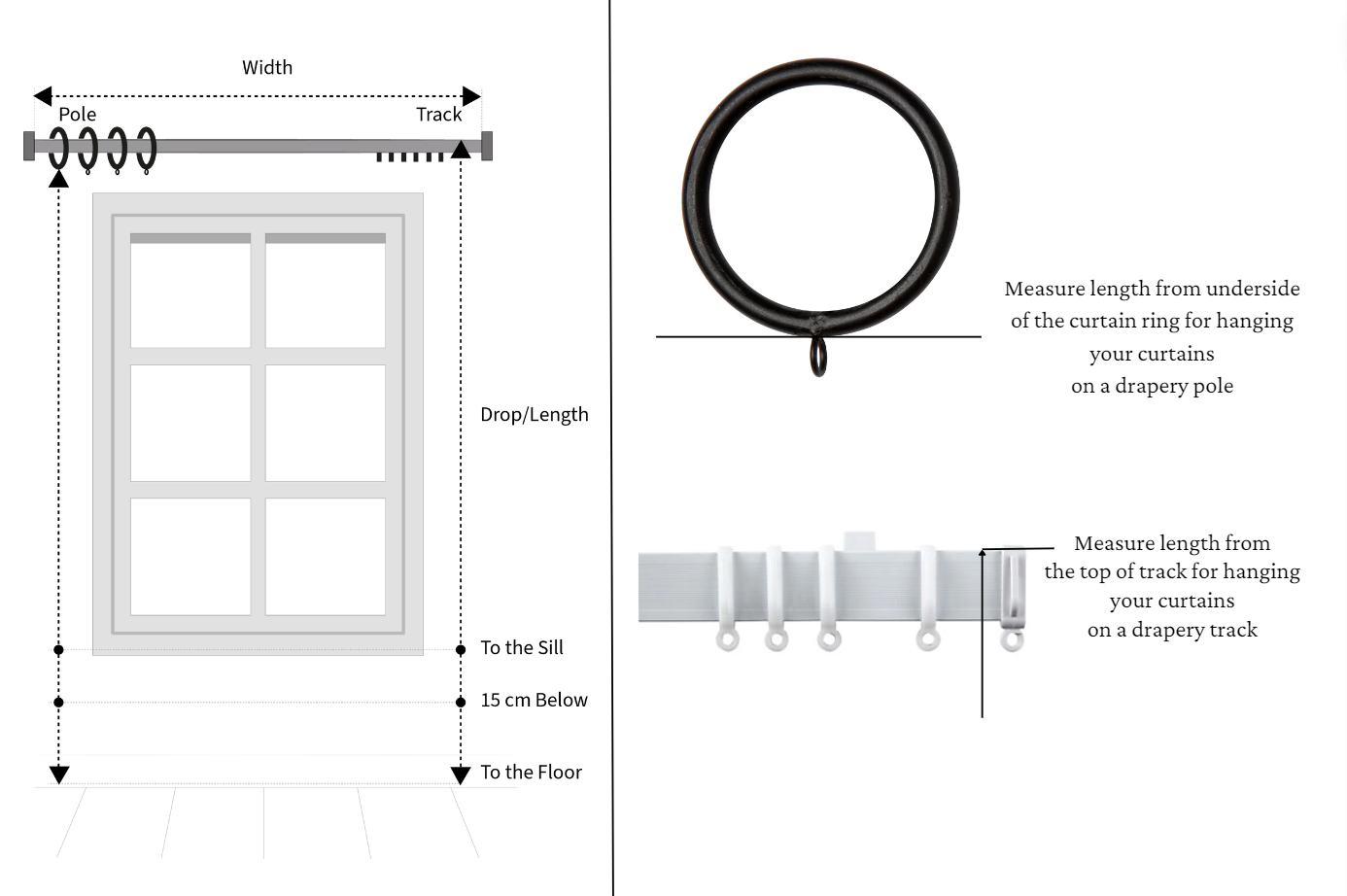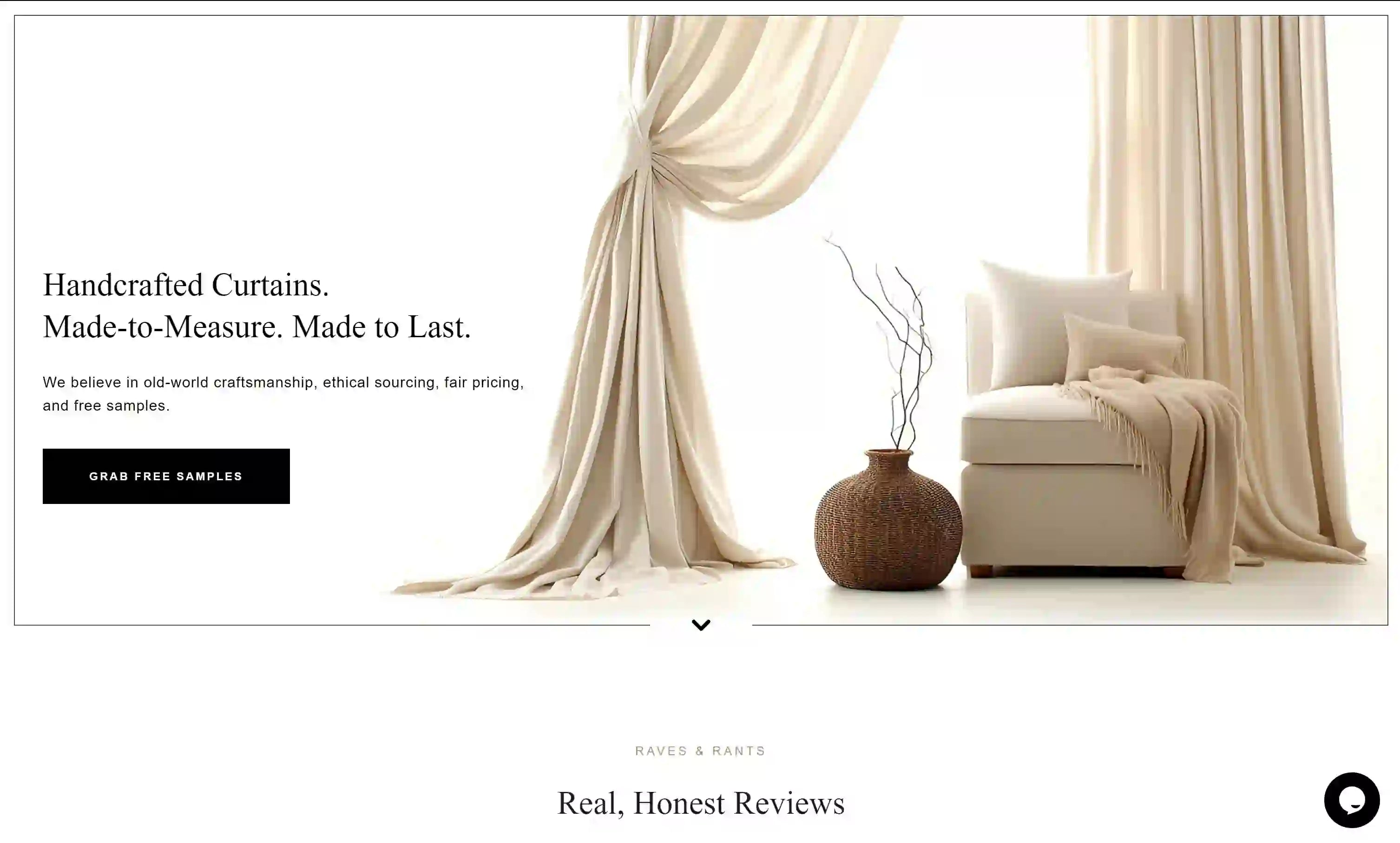Pencil Pleat Curtains & Window Drapes: A Complete Guide

Fabric selection is an important decision when shopping for curtains, but the buck does not stop there. The heading style of your made-to-measure curtains is another critical factor that contributes greatly to the drapery’s visual appeal and functional ease.
One of a dozen heading styles on offer here at The White Window, the pencil pleat is a winning candidate for many clients - especially for country locales, rustic decor homes and other casual spaces.
Offering a tailored look that’s not too structured, nor too easygoing, the pencil pleat style gets its name from its appearance wherein the top header of the panel gathers to look like pencils stacked in a line. How is this achieved? Well, read on.
What are Pencil Pleat Curtains?

Pencil pleat curtains are a style of curtains wherein the top header of the panels looks like pencils stacked in a line. The panels are sewn with a pencil pleat header tape on the back at top. This tape features drawstrings that can be pulled and tied at the desired level. When pulled, the drawstrings cause the curtain panel to contract and gather to form beautifully ruffled pleats on the top front. Although the pleats are not pre-fixed as in the case of pinch pleats, pencil pleat curtains relay a tailored look without seeming too formal.
What Makes Pencil Pleat Curtains Unique?

The key differentiating quality of pencil pleat curtain panels is the fact that they can be widened or contracted to fit a desired width without compromising their visual appeal heavily. So, for example, if a pencil pleat curtain panel is sewn to be 100cm wide, it can cover windows with a width ranging from 40cm to 60cm, depending on how tightly one pulls the drawstrings to gather the panel.
This incredible flexibility proves providential when changing homes as pencil pleat curtains can adapt width to the new settings easily. Save the money and the fuss over getting new window dressings. Besides, minor errors in calculating the width are forgiven easily.
What are the Top Reasons to Choose Pencil Pleat Curtains?

Pencil pleat curtains are beautiful, functionally efficient and easy to operate. They can be designed in various ways to suit varied decor styles. From exquisite velvets to sophisticated cotton curtains, from lovely florals to quiet solids, from monochromes to colour bursts - whatever your vision - you can translate it through this heading style.
Here are some reasons why pencil pleat curtains may find more favour with you than some other curtain styles:
- Pencil pleats are a classic style and as such fall in perfect place with traditional and country-style decor. But owing to their minimal profile, they can be easily incorporated into modern decor as well.
- When you want to have more flexibility with the width, this style is the solution. Owing to width flexibility, pencil pleat curtains can be used for other windows in the home in case you want to do an exchange at some point. They are also largely favourable to rentals and temporary homes so your curtains will most likely go perfectly with your new settings with a few tweaks.
- The low profile/depth of the header makes the pencil pleat style a great choice for a second layer under another set of drapes. The curtains will not obstruct the functional ease of operating both layers of drapes at the same time.
- Pencil pleats are one of the heading styles that give a high level of coverage on the top, allowing minimal light to leak through. There are no loops, tabs or grommets through which light can pass, thereby maximising the room-darkening qualities of drapes sewn in this style.
SHOP NOW: ROOM-DARKENING BLACKOUT CURTAINS FROM THE WHITE WINDOW
What are the Hardware Options for Pencil Pleat Curtains?

Pencil pleat curtains are versatile with hardware alternatives. They can be hung on drapery poles as well as tracks. Drapery poles are decorative accessories and can be finished with beautiful finials. Tracks are relatively pared-back hardware options with an industrial appeal and are preferred by those who want the curtains to be the sole star of the show.
How are Pencil Pleat Curtains Measured?

HOW TO MEASURE LENGTH: As noted above, pencil pleat curtains can be hung from either a track or a pole. If hanging from a track, panel length should ideally be measured from the top of the track up to the desired endpoint. This will allow for the fabric to cover/hide the track itself. If you’d like your track to be visible, measure from the bottom of the track to the desired endpoint.
Similarly, if you are hanging your pencil pleat drapes from a pole, and would like to show off the hardware, you can design your pencil pleat curtains to hang below the rings. In this case, measure the length from the underside of the rings to the desired ending point. If you want the hardware to be concealed, measure from the top of the pole.
Pencil pleat style suits both short and long curtains. The length may be decided based on your aesthetic preferences, room layout and functional purposes. They may stop at the sill or go all the way down to the floor.
HOW TO MEASURE WIDTH: The width of the curtains is determined in relation to the width of the window. Pencil pleat curtains should ideally be sewn/purchased with 2x or 2.5x fullness, that is, double or 2.5 times the width of the window.
To explain with an example, if your drapery pole/track is 300cm long, your curtain panels’ width altogether should ideally be 600cm (300 x 2). Then, depending on your personal preferences & needs, you may order two panels of 300cm each, or one single panel of 600cm.
Lightweight fabrics may need an even higher width than 2x fullness to gather into fuller pleats.
To some extent, the exact width to achieve the desired level of fullness is decided by clients based on various factors. But the key principle to remember is that the wider the panel width, the fuller the gather and pleats.
If you’re working with a constrained budget, you may lower the width to 1.5x at the most. But lowering it further is not recommended as it will leave you with a curtain panel that looks almost flat, with no pleats.
How to Hang Pencil Pleat Curtains?
Pencil pleat curtains are easy to install. Here is a step-by-step guide:

STEP 1: Lay down the curtain panel on the table with its rear side facing upward. Pull out the drawstrings on that side, knot them together and insert the loose ends into the header pocket.
STEP 2: Next, hold the drawstrings on the other side of the panel and pull them outwards together so that the curtain panel starts to gather in between, forming rounded folds in the process. Stop pulling when the panel contracts enough to reach the width you'd like for your final mounted panels. Knot the strings and tuck away the loose ends in the pocket.
STEP 3: Now spread the pleats evenly by nudging and adjusting the fabric across the strings.
STEP 4: Use a measuring ruler to measure and mark insertion points for the drapery pins. They should ideally be spaced equally across the panel’s finished width.

STEP 5: Insert drapery pins into the header tape at the marked points. Our header tape is 10cm wide with three levels to insert the drapery pins, offering further flexibility to adjust the exact height where you’d like your drapery to 'sit' at top.
STEP 6: Now, insert the pins into the eyelets of the rings on the drapery pole/track. And done!
In Closing

Pencil pleat curtains offer you everything you can ask for from curtains. However, they may not be the best choice for all spaces - especially highly formal rooms. Pencil pleats are soft pleats - stylish without being too elaborate - are just the right level of balance between the dressy pinch pleats and the minimal flat panel tops or grommet tops. But should you be interested in other alternatives, do explore other drapery heading styles where you may find one that ticks all the boxes for you.

